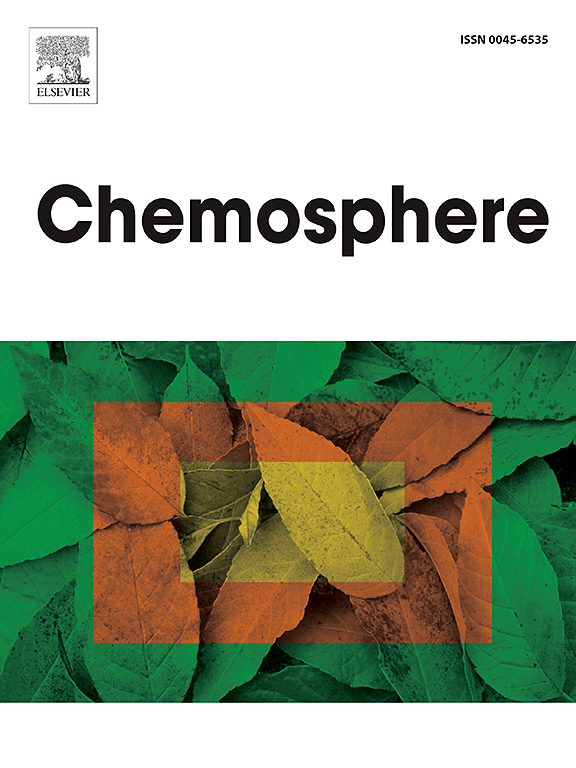提高绿叶蔬菜加工中的用水效率:在线氯和pH控制系统在减少微生物污染和限制DBP形成方面的功效
IF 8.1
2区 环境科学与生态学
Q1 ENVIRONMENTAL SCIENCES
引用次数: 0
摘要
由于水资源日益短缺,优化食品工业用水至关重要。消毒剂通过抑制细菌生长和减少交叉污染风险来延长洗涤水的使用寿命。通常选择氯是因为它价格合理、易于使用和可用。保持pH值为5.5-6可使游离氯的有效性最大化。然而,保持稳定的pH值和氯含量是具有挑战性的。与离线点测量相比,氯水平连续在线监测系统具有显著优势,可以解决氯和pH值的波动问题。自动化智能洗涤分析平台(ASAP)单元是一个在线计量和监测(即控制)系统,在冰山生菜和Lollo Rossa生菜的洗涤过程中进行了全尺寸测试,使用不同的生菜与水的比例,模拟各种处理条件。将在线和离线的游离氯和pH值与ASAP装置进行了比较。此外,还监测了其他理化参数,包括化学需氧量(COD)、254 nm紫外吸光度(UVA254)、氧化还原电位(ORP)和浊度。微生物学分析(总平板计数、大肠菌群和假单胞菌)评估了交叉污染风险,同时评估了洗涤水和最终产品中的三卤甲烷和氯酸盐水平,以监测DBP。还测量了SmartWash原始酸化剂(即t -128,氯稳定剂)的加工助剂丙二醇和正磷酸盐。结果表明,尽管有机负荷增加,控制单元仍能保持稳定的氯和pH值,降低交叉污染风险,并确保微生物稳定性。最终产品中的DBP水平和加工助剂仍在法定范围内。此外,鲜切生菜的感官品质不受影响,与氯的使用无关。本文章由计算机程序翻译,如有差异,请以英文原文为准。

Enhancing water efficiency in the processing of leafy greens: Efficacy of inline chlorine and pH control systems in reducing microbial contamination and limiting DBP formation
Optimizing water use in the food industry is crucial due to its increasing scarcity. Disinfectants extend the lifespan of wash water by inhibiting bacterial growth and reducing cross-contamination risks. Chlorine is commonly chosen for its affordability, ease of use, and availability. Maintaining a pH of 5.5–6 maximizes free chlorine effectiveness. However, maintaining stable pH and chlorine levels is challenging. Continuous inline monitoring systems for chlorine levels offer significant advantages over offline point measurements, addressing fluctuating chlorine and pH levels. The Automated SmartWash Analytical platform (ASAP) unit, an inline dosing and monitoring (i.e. control) system, was tested at full scale during the washing of iceberg and Lollo Rossa lettuce, using different lettuce-to-water ratios, simulating various processing conditions. Inline and offline free chlorine and pH measurements were compared with those of the ASAP unit. Additional physicochemical parameters, including chemical oxygen demand (COD), ultraviolet absorbance at 254 nm (UVA254), oxidation-reduction potential (ORP), and turbidity, were also monitored. Microbiological analysis (total plate count, coliforms, and Pseudomonas spp.) assessed cross-contamination risks, while trihalomethanes and chlorate levels in wash water and final products were evaluated to monitor DBP. Propylene glycol and orthophosphate, processing aids from SmartWash Original acidulant (i.e.T-128, a chlorine stabilizer), were also measured. Results demonstrated the control unit's ability to maintain stable chlorine and pH levels despite increasing organic loads, reducing cross-contamination risks and ensuring microbiological stability. DBP levels and processing aids remained within legal limits in the final product. Moreover, the sensory quality of fresh-cut lettuce was unaffected, regardless of chlorine use.
求助全文
通过发布文献求助,成功后即可免费获取论文全文。
去求助
来源期刊

Chemosphere
环境科学-环境科学
CiteScore
15.80
自引率
8.00%
发文量
4975
审稿时长
3.4 months
期刊介绍:
Chemosphere, being an international multidisciplinary journal, is dedicated to publishing original communications and review articles on chemicals in the environment. The scope covers a wide range of topics, including the identification, quantification, behavior, fate, toxicology, treatment, and remediation of chemicals in the bio-, hydro-, litho-, and atmosphere, ensuring the broad dissemination of research in this field.
 求助内容:
求助内容: 应助结果提醒方式:
应助结果提醒方式:


